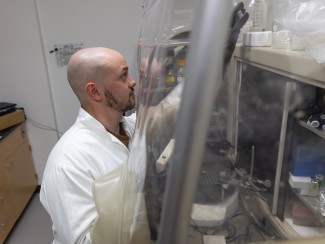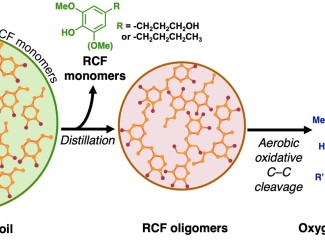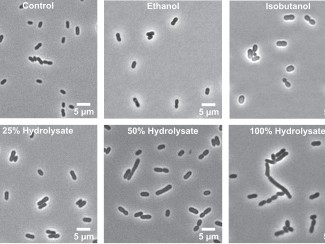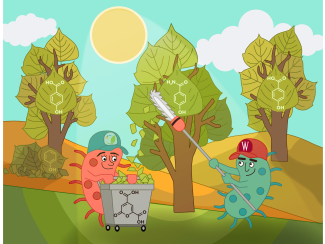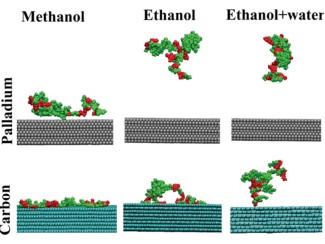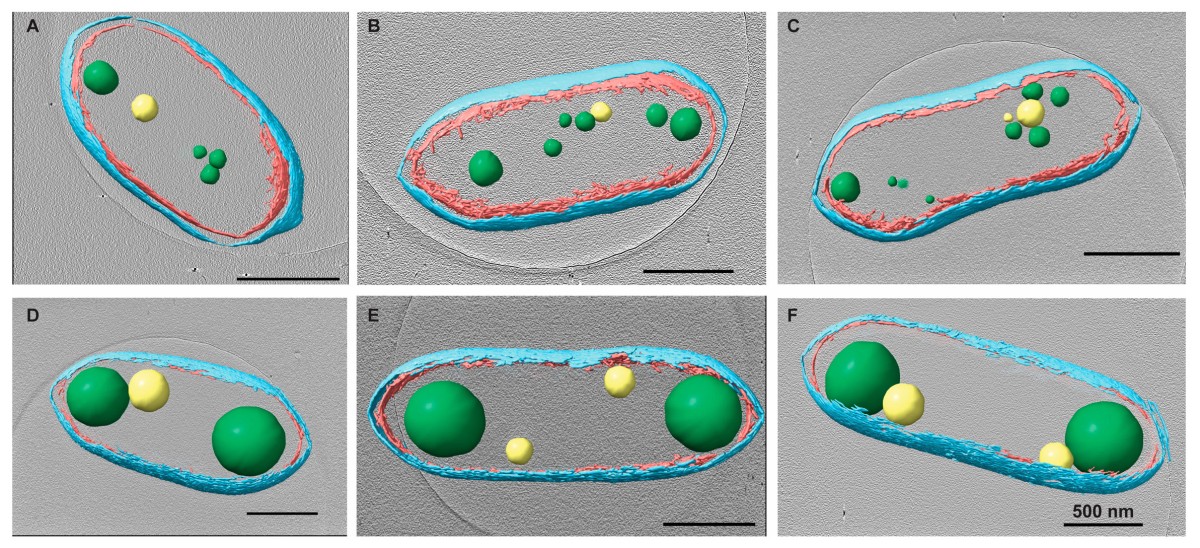
The Science
Polyhydroxybutyrate (PHB) is a complex chain of molecules, or biopolymer, produced by certain bacteria as a way to store excess carbon. Polyphosphate (PP) is another type of biopolymer that bacteria use to store inorganic phosphate. These storage organelles, or granules, can serve as energy reserves and may be necessary for basic functions, including allowing cells to move freely on their own. University of Wisconsin–Madison scientists used advanced microscopic imaging to better understand the structure and function of these granules and their roles in microbial biology. They found that stunting cell growth caused bacteria to accumulate significantly more PHB and PP concentrated in larger granules, suggesting the organelles play a role in stress response.
The Impact
The findings could help scientists better understand how bacteria respond to antibiotics and inform new strategies for engineering microbes to produce renewable compounds like PHB that can be made into bioplastics, fuels, and other industrial products.
Summary
Researchers with UW–Madison's Great Lakes Bioenergy Research Center and Cryo-EM Research Center grew cultures of Rhodobacter sphaeroides and treated half the samples with antibiotics that halted the bacterium's growth. They used a technique called cryo-electron tomography to build three-dimensional images of the cells and identified the different granules based on their size, electron density, and sensitivity to a beam of electrons. To verify the identification, the researchers grew a mutant strain without the gene required for PHB production; those cells produced only the denser PP granules.
Cells treated with antibiotics accumulated 10-20 times more PHB, suggesting PHB is a mechanism used to cope with stress. Despite accumulating more PHB, the treated cells had fewer granules, often positioned at either end of the cell. Researchers also noticed a correlation between the location of PHB and PP granules in treated cells, which could imply a biological advantage to the arrangement of the energy storage organelles.

